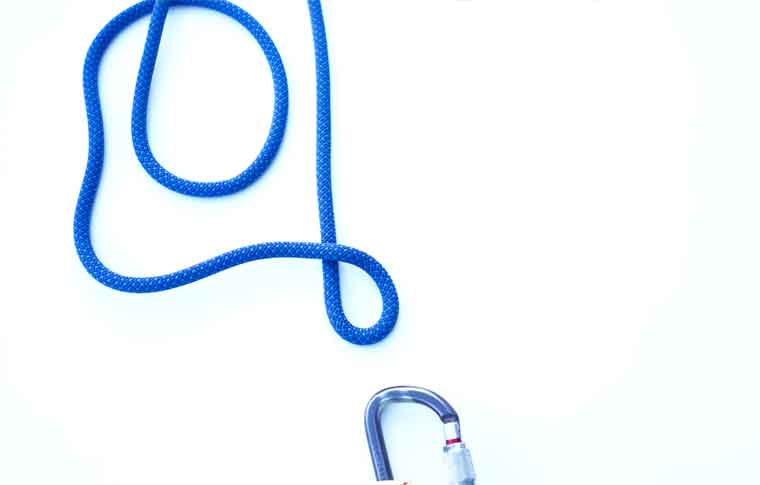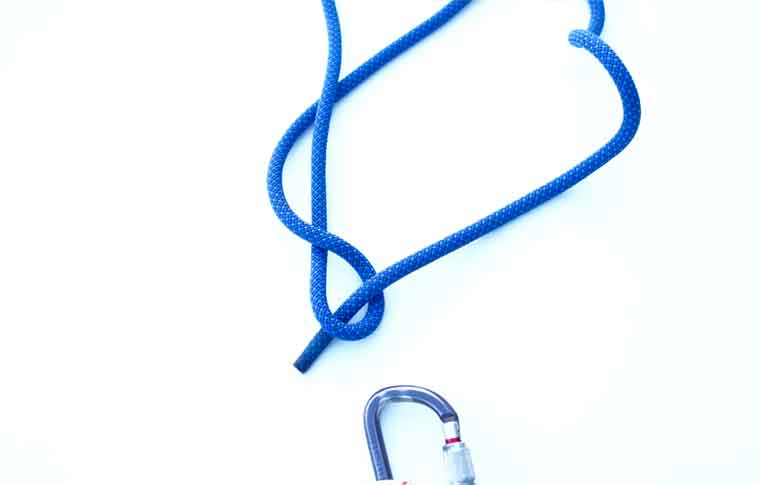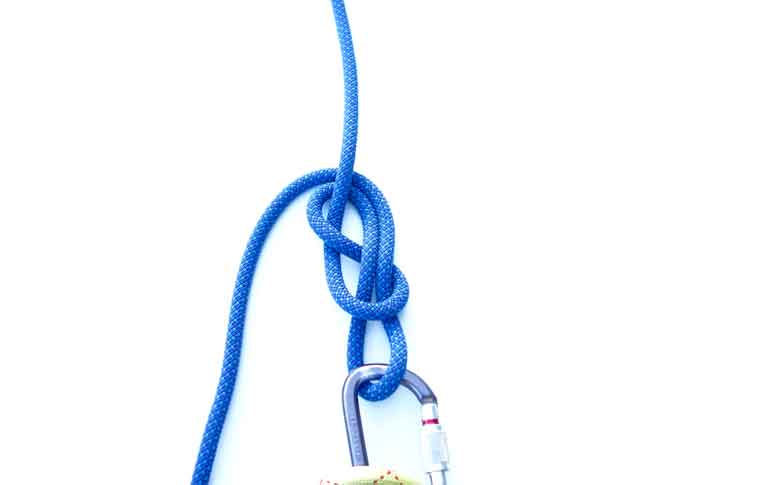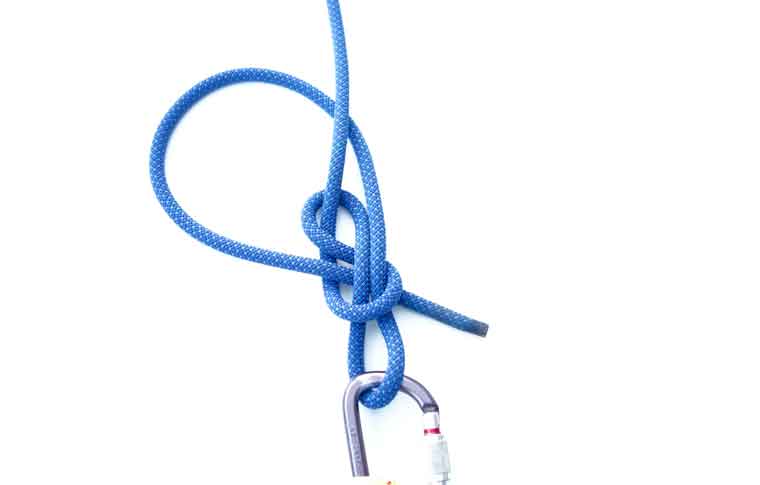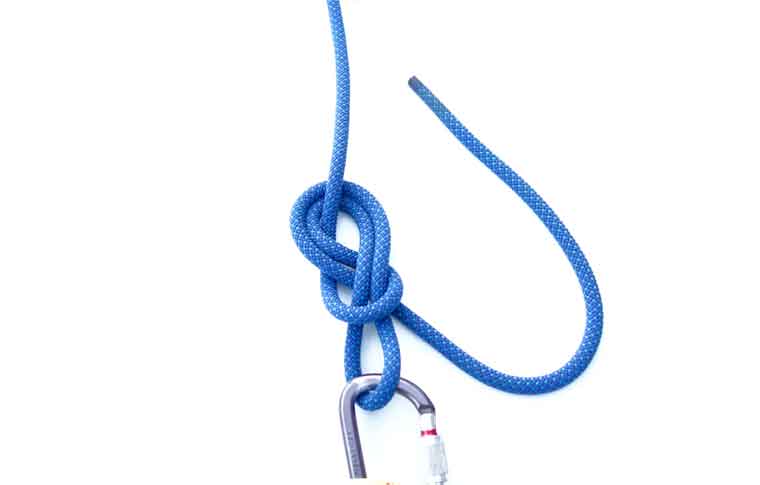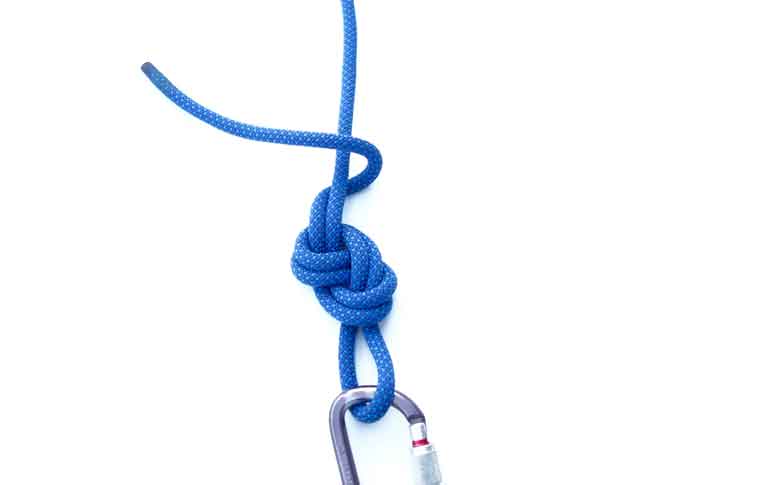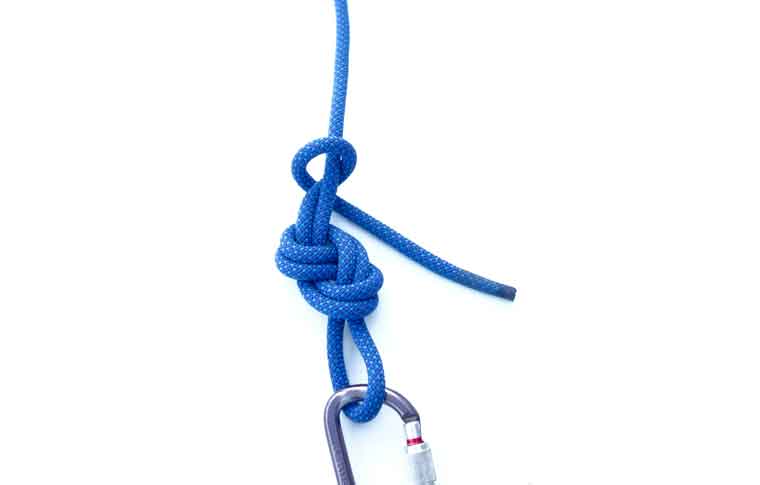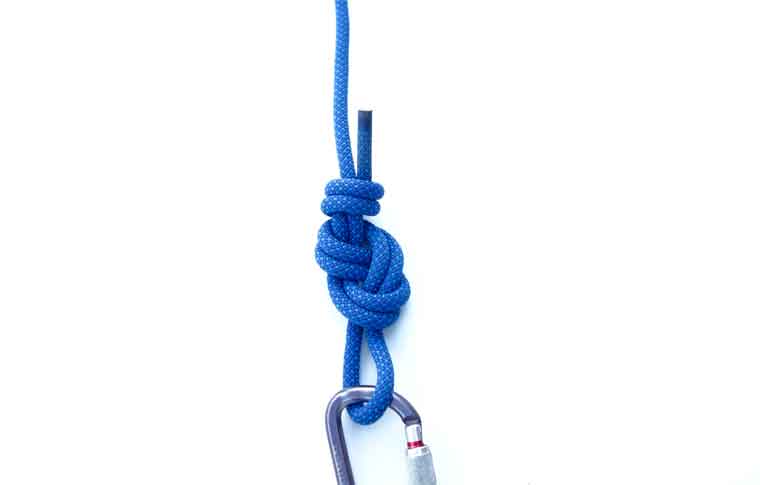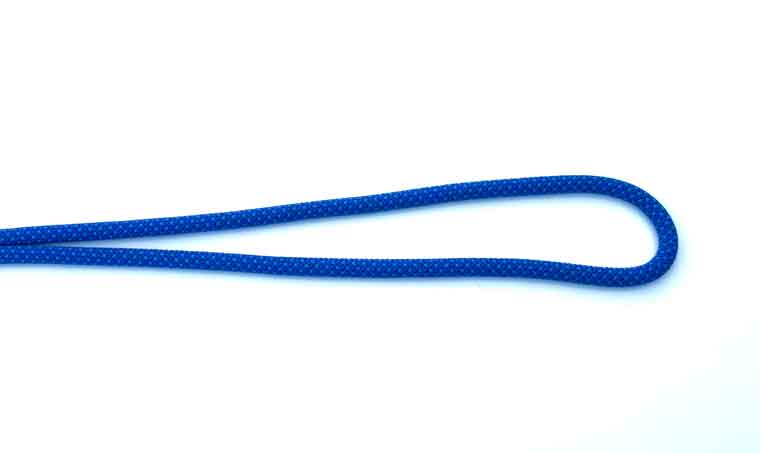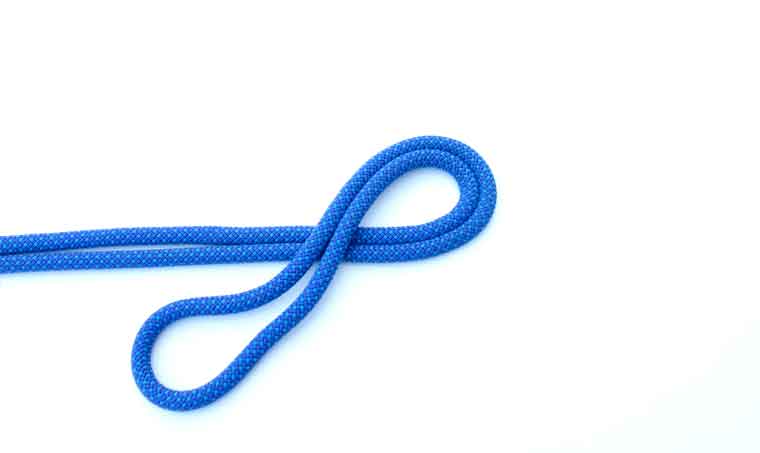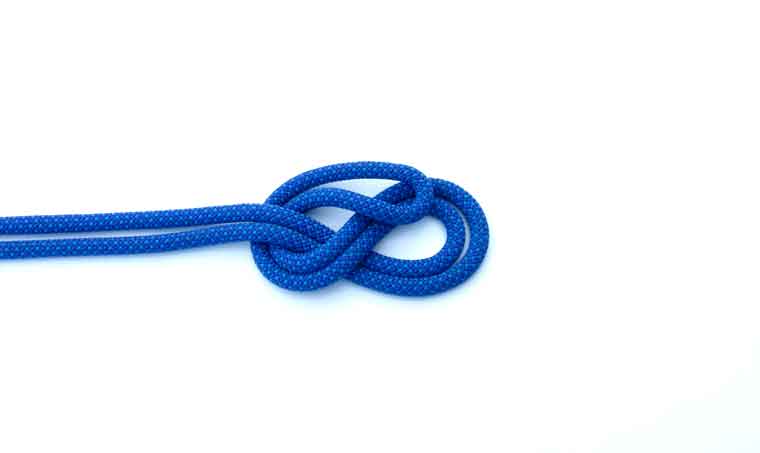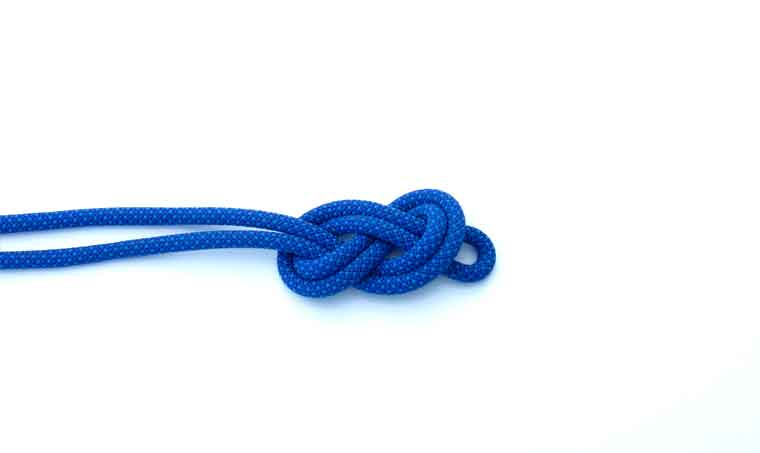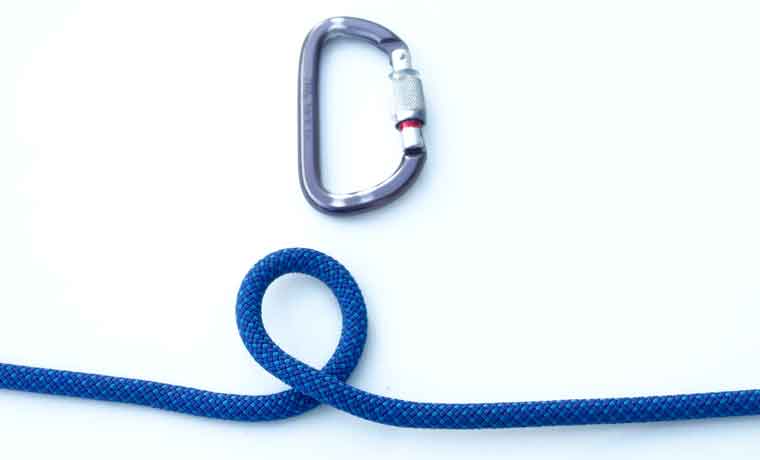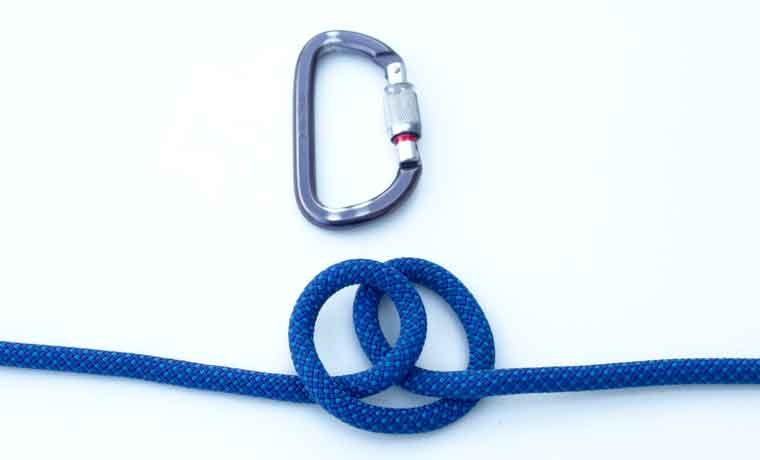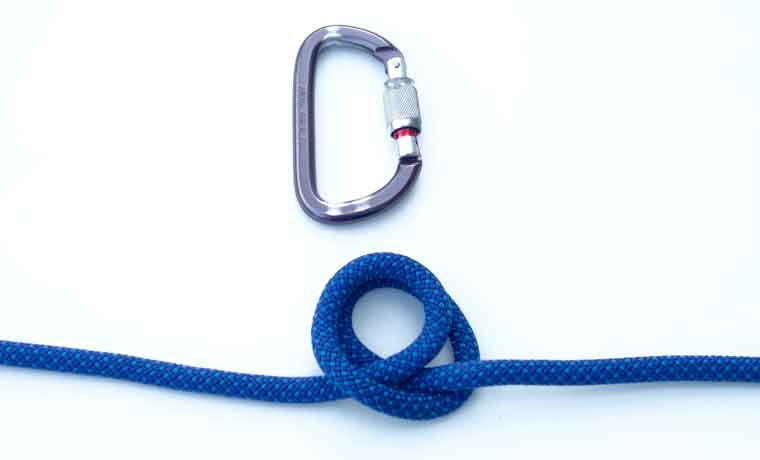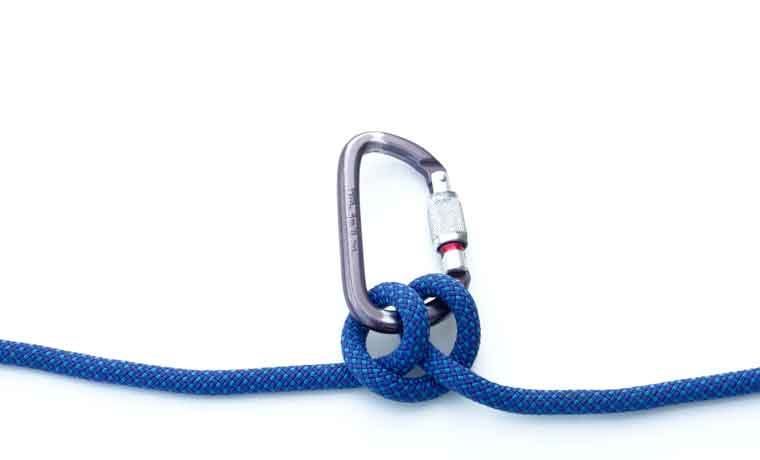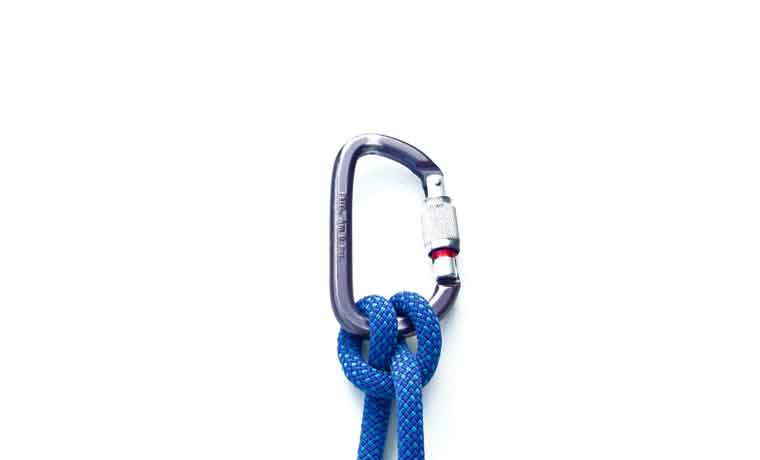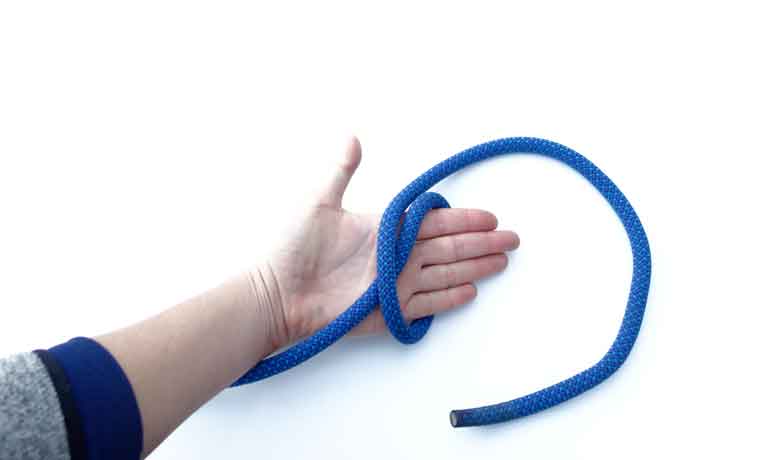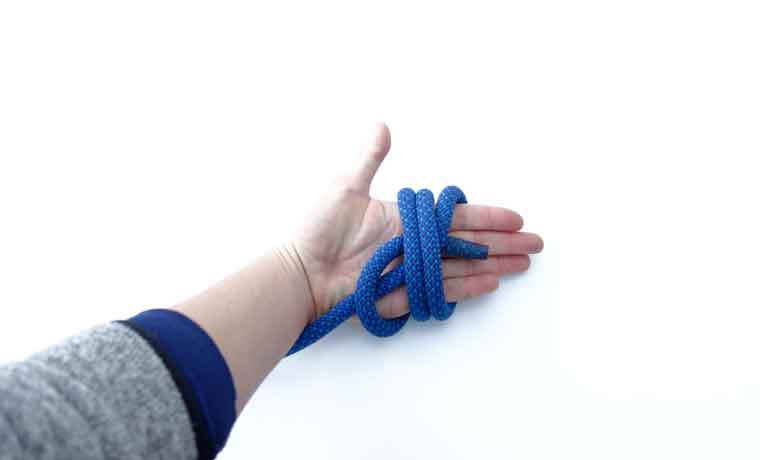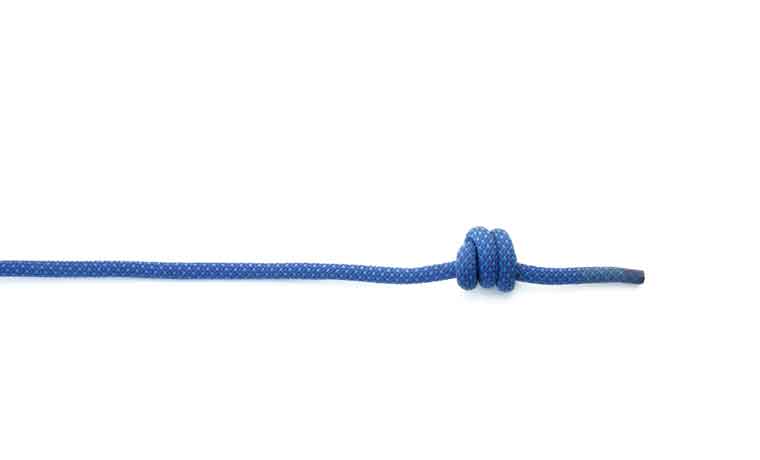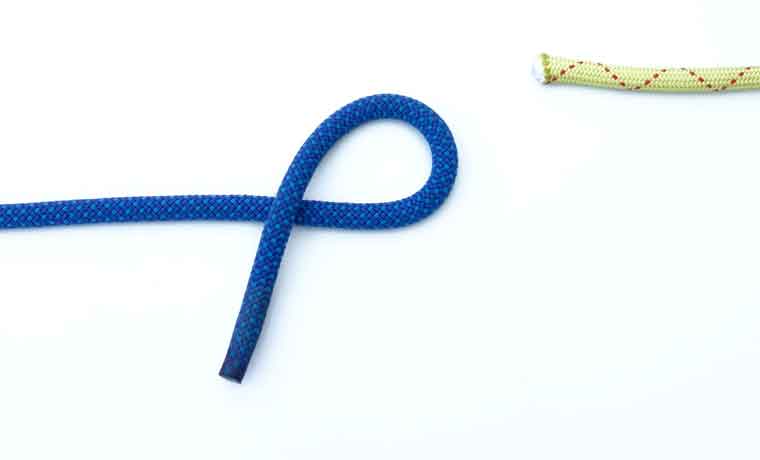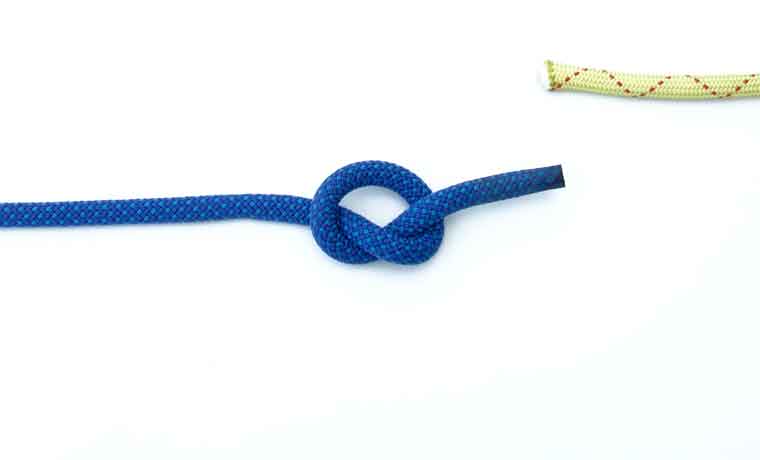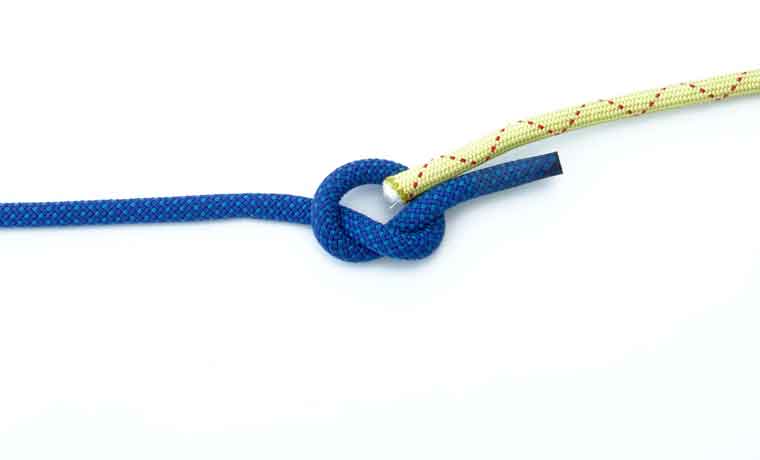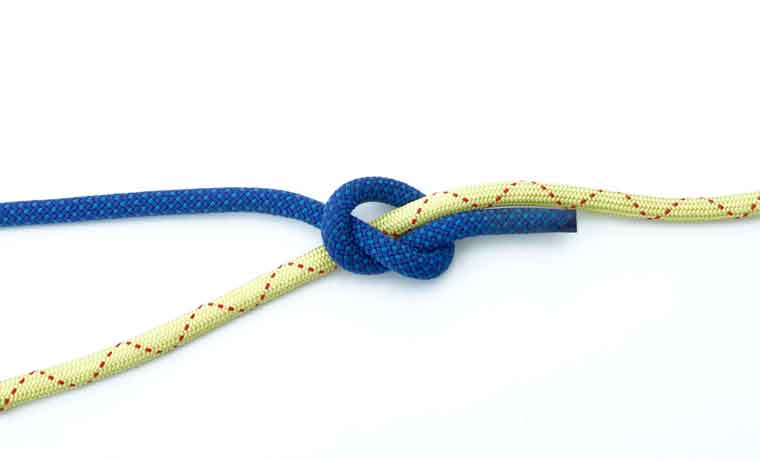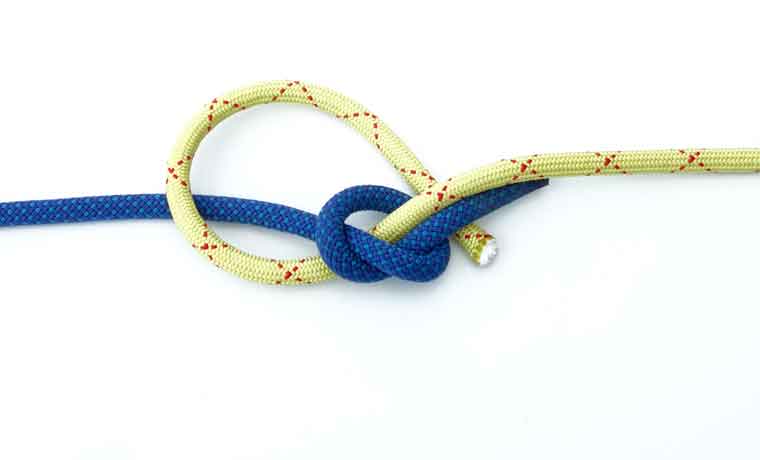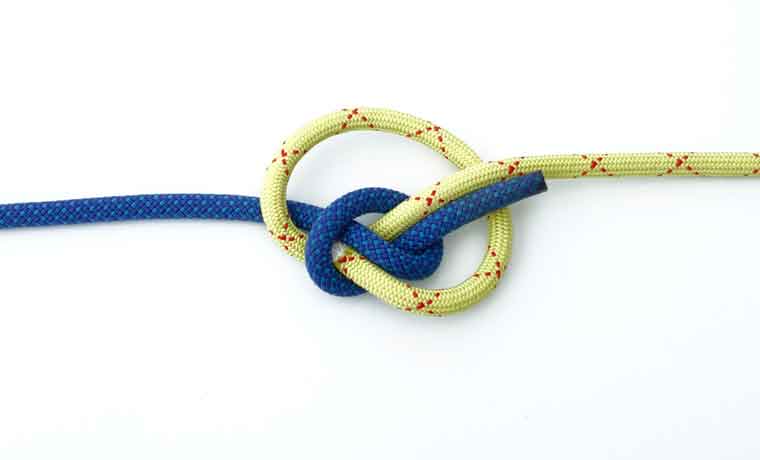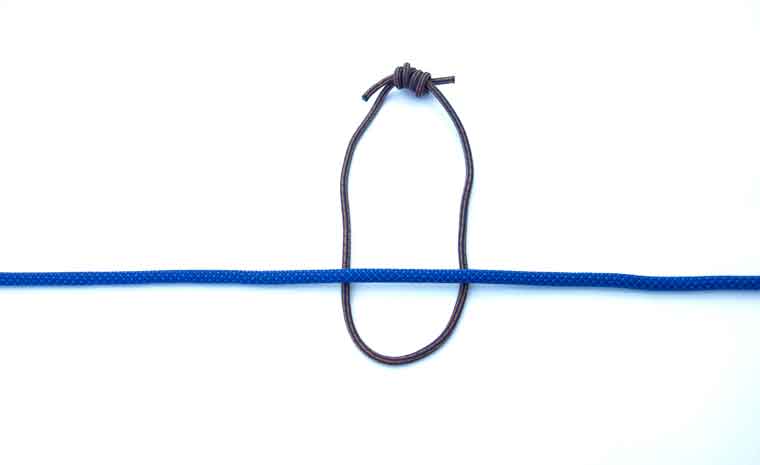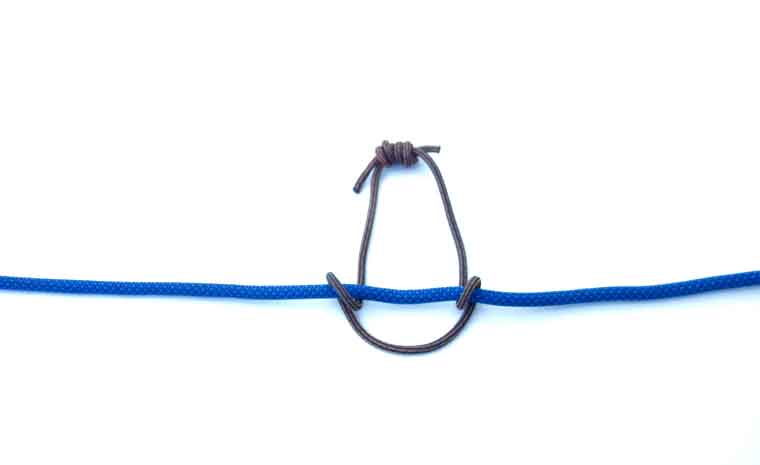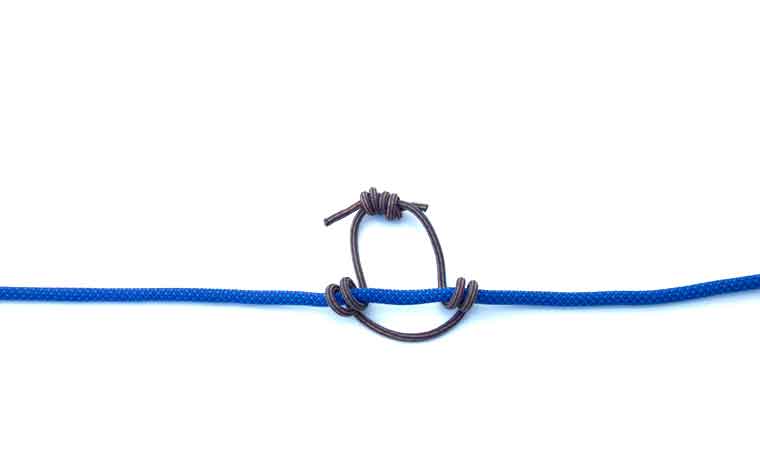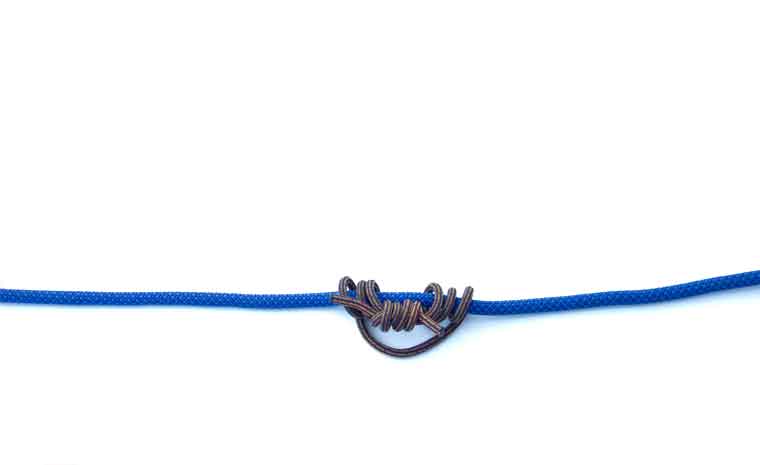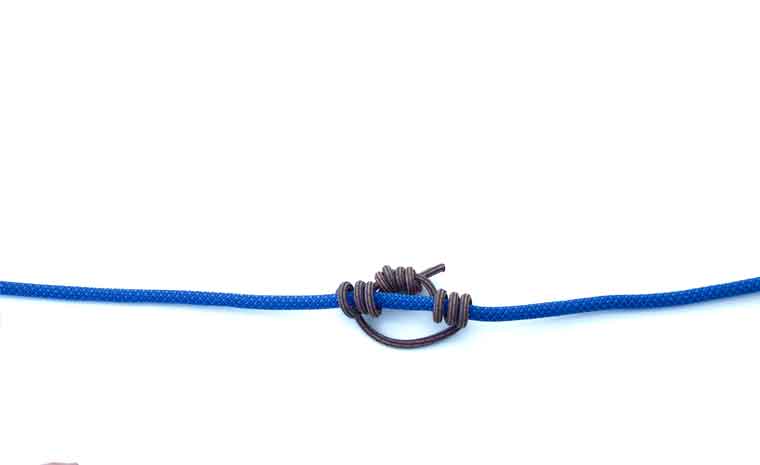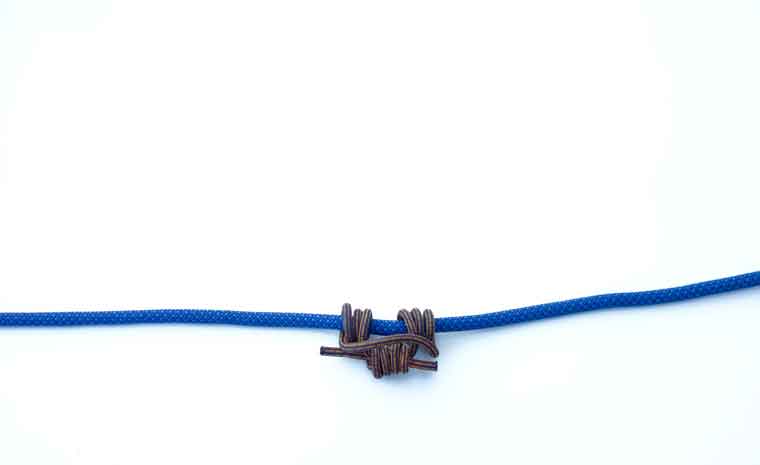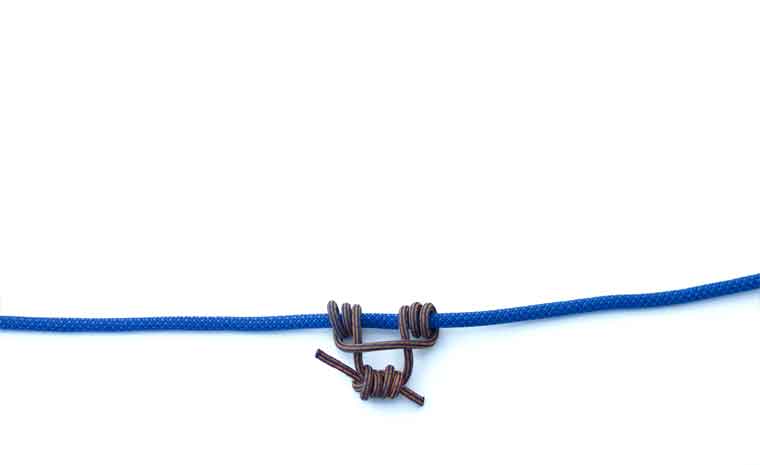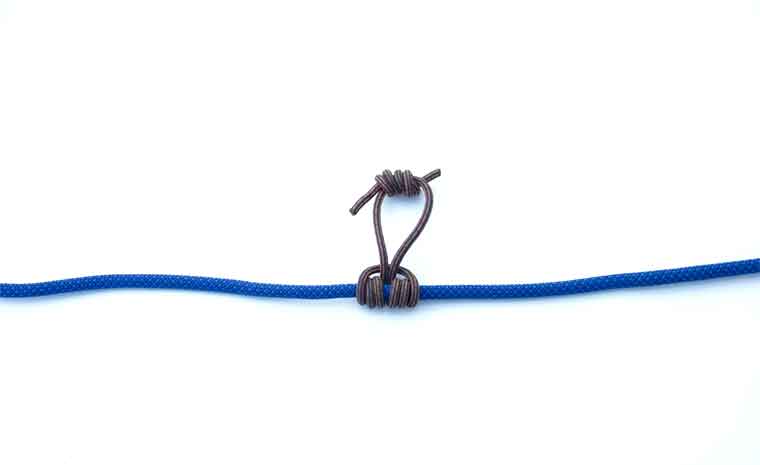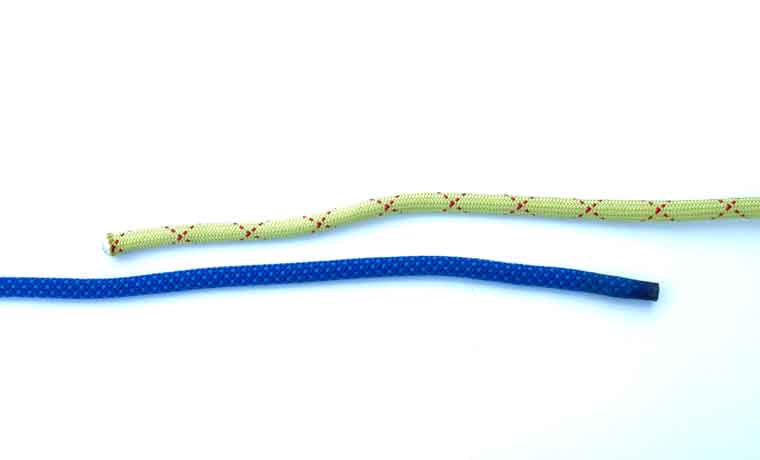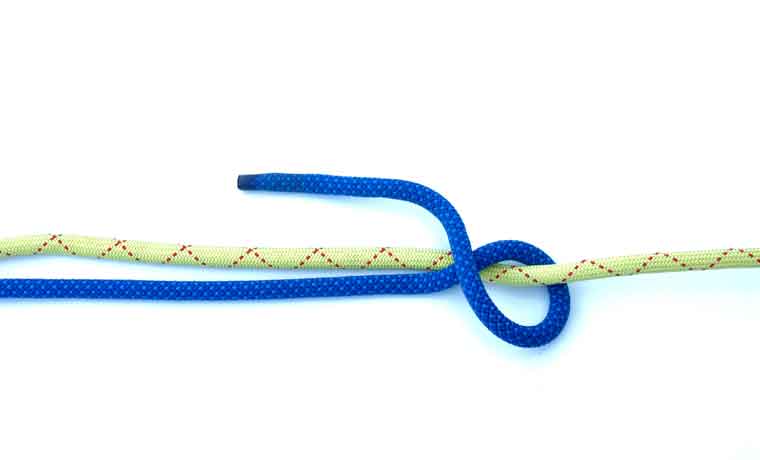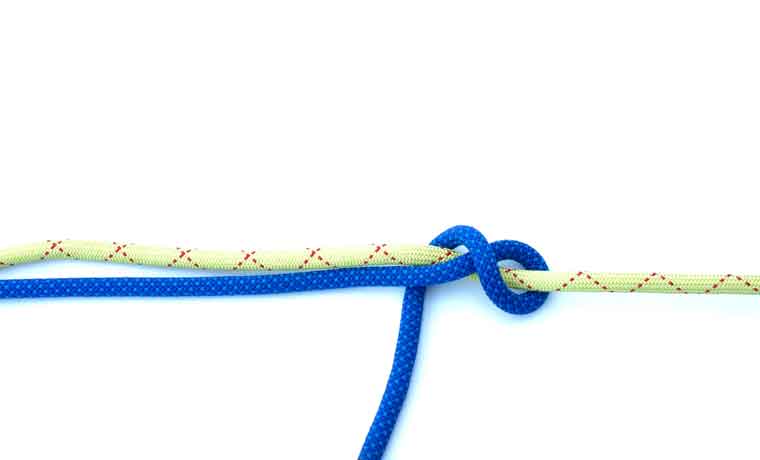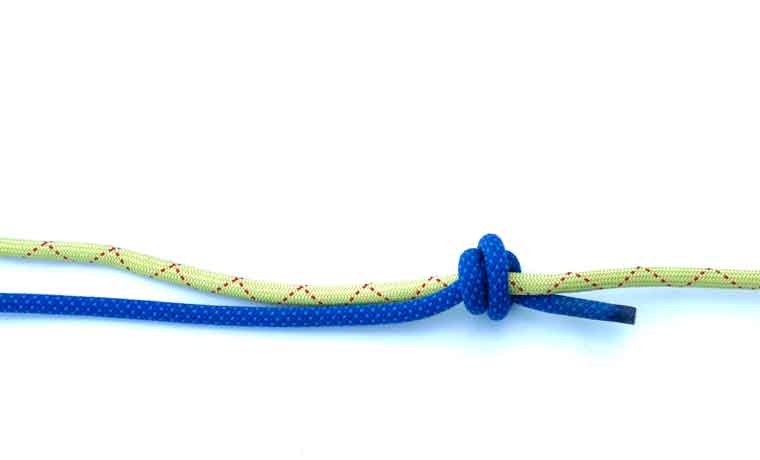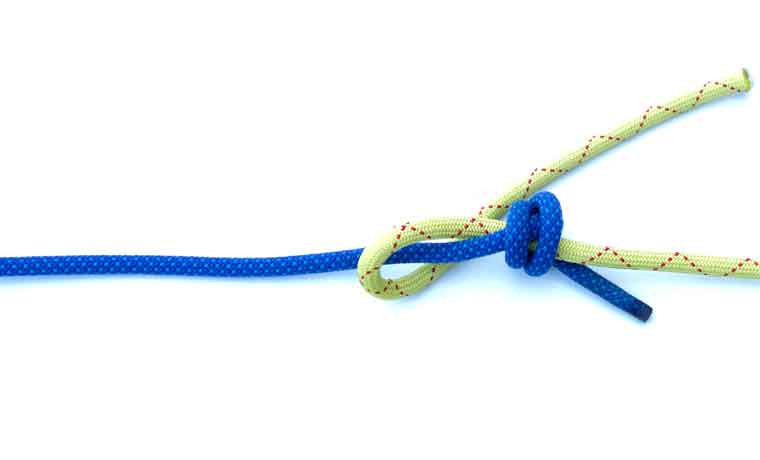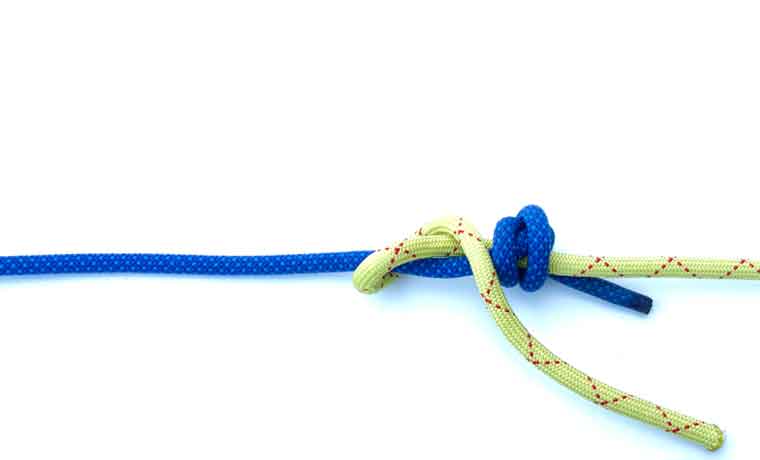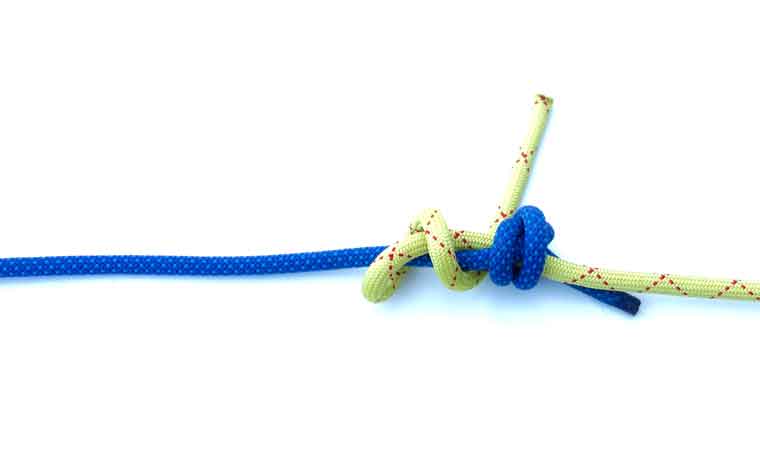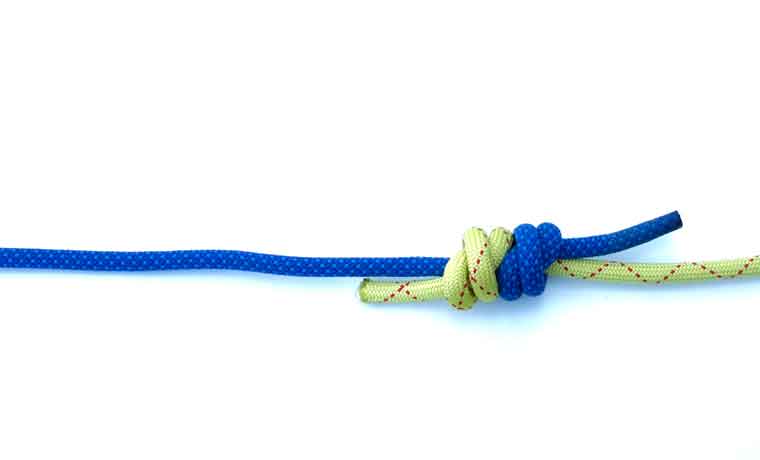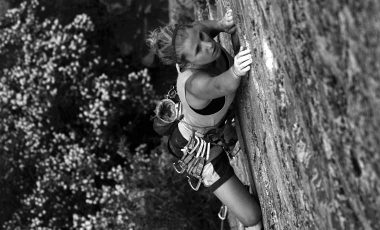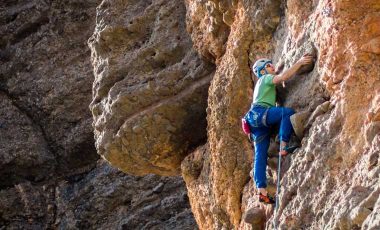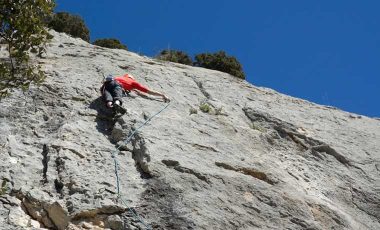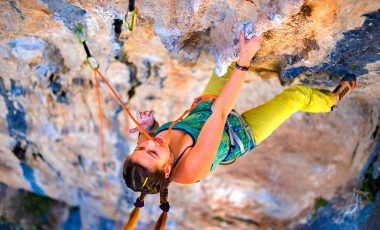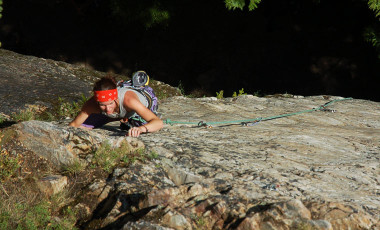Rock climbing wouldn’t exist if it weren’t for climbing knots. Well, it would I guess, but participation would be pretty low and mortality rate rather high! Knowing how to tie a few basic climbing knots is an essential and lifesaving skill that every climber needs to know regardless of their climbing level.
Every beginner climber should be able to tie the Figure Eight Tie-in Knot in their sleep. Don’t panic, it’s at the top of our list for those who haven’t quite nailed it yet! And once that knot is mastered the below list of climbing knots should also be learned inside out.
IMPORTANT
Once you’ve figured out how to tie the below climbing knots from our instructions, be sure to get someone to check them before you use them in real life. You don’t get second chances with climbing knots, and reading our instructions alone doesn’t qualify you to use them actual climbing scenarios until someone experienced has physically seen you do them.
7 essential climbing knots
- Figure Eight Tie-in Knot with Double Stopper
- Figure Eight on a bight
- Clove Hitch
- Barrel Knot (triple overhand knot)
- Water Knot (Ring Bend)
- Prusik Knot
- Double Fisherman’s Bend
01Figure Eight Tie-in knot with Double Stopper
The karabiner in the image represents your climbing harness
USED TO: Tie a climbing rope to your harness.
The figure eight tie-in knot is the first climbing knot you will need to learn. And you’ll use it every single time you climb with a rope, so it’s worth practising it so that you can do it with your eyes closed.
This version has a double stopper (or double overhand) at the end to make it even more secure. A double overhand is used to tie-off many knots and is also used in the double fisherman’s knot, below.
The figure eight tie-in is a very safe knot as it only tightens under tension. This can, however, make it tricky to untie.
Notes:
It’s important to start this knot in the right place on the rope. Otherwise you can be left with a very long extra bit of rope hanging around, or not enough rope to complete the knot properly.
Before you start tying this knot you’ll need to roughly measure the rope:
- Hold the end of the rope in your right hand.
- Keep hold of the rope and place this hand right next to your right shoulder. Keep it there.
- Take up the rope with your left hand and let the rope run through this hand until your left arm is outstretched at shoulder height to your left.
- At this point, grasp hold of the rope with your left hand and let go of you the end of the rope in your right hand.
- The point you are holding in your left hand is where you should start the figure eight knot.
02Figure Eight on a bight
USED TO: Quickly anchor ropes or yourself to a belay station.
This is a very quick, easy and secure way to make a loop in the middle of the rope. It is used to secure yourself to an anchor via a karabiner, or to create a loop to attach gear to if needed.
Notes:
Once tied, adjusting its position on the rope can be a little fiddly. This makes it a tough knot to work with if you need it to be tied at a very specific length. The Clove Hitch is a good alternative as an easily adjustable belay anchor knot.
03Clove Hitch
USED TO: Secure yourself to belay anchors.
The Clove Hitch is an incredibly simple, yet highly secure and versatile climbing knot which is usually tied in the middle of a rope. Because it is so easy to adjust, it is an excellent knot to use to secure yourself to belay anchors, enabling you to tie-in securely in the perfect position.
Notes:
To adjust the position of the knot on the rope simple loosen it, let the rope slide through the karabiner to the new position and put tension on it to tighten.
04Barrel Knot (triple overhand knot)
USED TO: Secure a ‘stopper’ at the end of a rope when rapelling or belaying. It ensures that the end of the rope doesn’t slip through the belay device.
This is a similar knot to the stopper knot (double overhand) used in a figure eight tie-in knot. It has one extra loop than a double overhand (hence the ‘triple’). This makes is more secure when used on its own. The below Double Fisherman’s Knot can also be tied with a Barrel Knot (instead of a double overhand).
05Water Knot (Ring Bend)
USED TO: Join the ends of tubular webbing together to create a loop.
Also known as a Ring Bend, Water Knots are most commonly used to create slings out of lengths of tubular webbing. Because they are so easy to tie some people use them to attach two pieces of rope together instead of the Double Fisherman’s Knot. Water Knots are easier to untie than Double Fisherman’s Knots (once weight has been applied). But they can loosen over time, so always check before you use them.
06Prusik Knot
USED TO: Ascend a rope.
Prusik Knots are friction hitches that grip onto the rope when weight is applied. When there is no tension running through the knot it can slide up and down a static rope with ease.
Notes:
These knots are extremely useful in rescue situations and are most often used in pairs: one weighted while the other one is moved up the rope, switching between the two. However, they are also handy to use if you take a fall on an overhang. Attach a Prusik loop to your climbing rope from your harness and you can inchworm your way up the rope to get a hold back on the rock.
To tie a Prusik Knot, you will first need a Prusik loop:
- Take a length of 4-6mm perlon cord that is 60-70cm long.
- Tie the ends of the cord together using either a Water Knot or a Double Fisherman’s Bend.
07Double Fisherman’s Bend
USED TO: Attach the ends of two ropes.
This combination of two double overhand knots is a very secure way of attaching the ends of two ropes. It is also used to create a loop out of cord, as in the Prusik loop. Once weight has been put through the knot it can be very difficult to untie, which can be a huge positive, as well as a negative.
Practise makes perfect! Even if you don’t have access to a proper climbing rope you can practise all of these climbing knots with a pair of shoe laces or string. And if you prefer to watch videos when learning your knots then take a look at REI’s article on how to tie climbing knots.
But remember, no climbing knot should be used until it’s been checked by someone who knows their stuff.
Climb on, happy climbers!
For more useful knots, check out our guide to camping knots.



